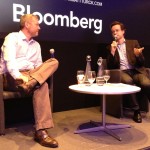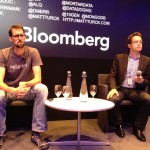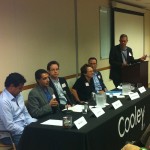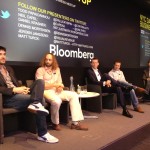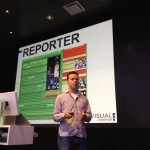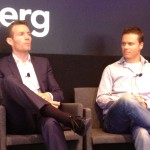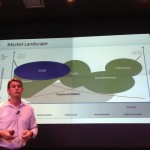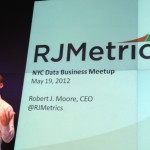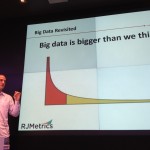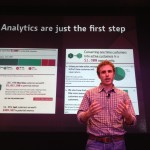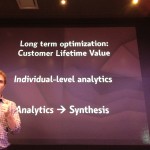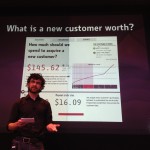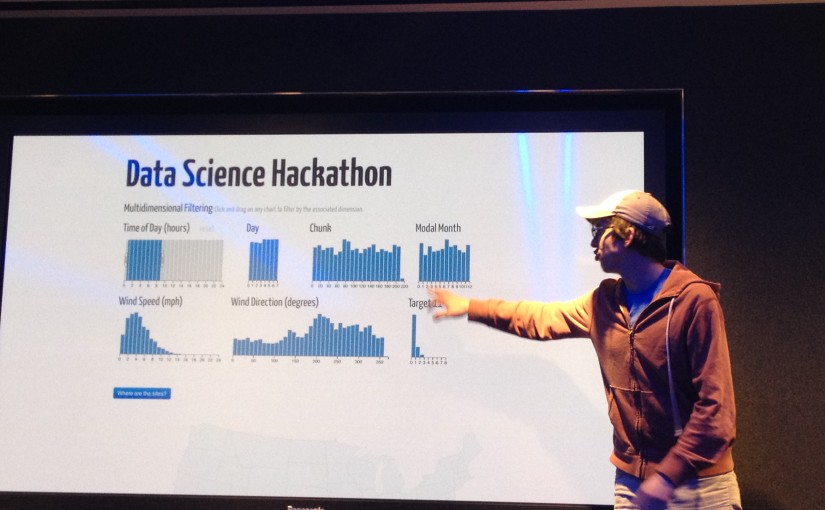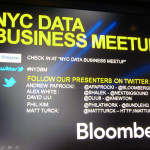If you’re a startup founder, a day will come, generally sooner rather than later, when you have to deal with a big company – whether that’s a Fortune 1000 company you’re trying to sell something to, a large advertising agency you hope will drive some advertising dollars your way, or a media company you want to strike a partnership with. You may have been successful “selling” your vision to a group of angels or VCs and raise some money, but selling to a large company (and in “selling”, I include all forms of partnerships and other business development efforts) is a different animal altogether. For the last three years or so, I’ve been on the big company side and have heard many startups pitch a business relationship. The following tips – some trivial and slightly tongue in cheek, others more substantial – are based on patterns and issues I’ve seen over and over (presented in no particular order of priority).
1. Read a few sales books. Our startup culture very much celebrates product people (those who, like Steve Jobs, are able to create “stuff that people want”), and tech talent (the people who actually build the product). Some iconic founders of the previous decades may have been sales people (Larry Ellison being one example), but sales seems to have fallen out of favor as a key part of any founder’s skillset – you’ll hardly ever hear any VC express a strong preference for CEOs who have a strong sales background, the way they rave about technical CEOs. One consequence of this is that many startup founders (especially the younger ones, but not only) come equipped with incredible product savvy, but seem to have spent very little time learning how to sell. Selling to a large company is not just a question of presentation, it’s also about navigating a complex organization and being able to qualify an opportunity –I find that startup founders often fail to ask some basic questions about budgeting cycles, decision process, etc., and end up not being able to truly appreciate whether they have a real opportunity or not. The good news is, there’s tons of literature out there. Sure, many sales books have cringe worthy titles, and none of them are perfect, but after reading a few of those, a number of important principles emerge. Worth investing some time reading a few.
2. Hire a sales person. This flows from the previous point. No question, founders should be the initial sales people at their startups: there’s no better way to get market feedback and fine tune your value proposition. But I’m often surprised by how long startups wait before bringing in their first sales (or “biz dev”) person on board. I’m all in favor of building viral buzz about your product through blogs and social media, and using other innovative techniques to increase your inbound leads. But in many cases, all those techniques only take you so far, and at some point, particularly if you sell to large companies, you’re going to have to go through a series of in-person sales meetings. Like for most things in life, experience helps, and in my opinion, a combination of an experienced sales (or biz dev) person and a product/tech founder proves very effective in a meeting with a big company.
3. Play down the startup vibe. Sure, Zuckerberg wears sandals in business meetings (at least in the movie), but for almost everyone else, there’s very little upside to showing up in a hoodie and sneakers at a meeting where most people are going to wear ties and business suits. The startup tech world may have its own, idiosyncratic rules and codes, but when it comes to selling to a large company, it’s back to reality. Those people don’t read TechCrunch every day (if ever), and they will have most likely no idea who your hotshot investors are. Do yourself a favor and don’t show up looking like a college kid, because in large companies, recent college graduates are the people at the very bottom of the totem pole, not the people you invest a significant amount of time and resources doing business with.
4. Do not play with your phone during the meeting. Ever. Can’t tell you how often this happens. It typically goes down something like this. Three founders or team members of the startup show up at the meeting. One ends up being the lead presenter and fielding most of the questions. Another one says something every 10 minutes or so, and looks bored and disengaged the rest of the time. The third one spends the entire meeting playing with their iPhone (and I’m not talking about taking meeting notes). Guys, seriously? Remember, people will rarely call you on it, but that doesn’t mean you got away with it.
5. Come prepared. This should be obvious, but it’s not, and if you are truly well prepared for a meeting, it can be a major differentiator playing in your favor. Unlike an investor pitch, a pitch to a big company is not about you and how awesome your product is. It’s about how you can help the big company solve a specific problem. You should come in knowing everything you can read about the big company, and have ideas about where and how you could help. If you show slides, insert screenshots of the big company’s products in your deck. Your demo should be using examples relevant to the big company, or at a minimum, to whatever industry the big company operates in. If you truly want to make an impression, build a simple demo just for the meeting. Regardless, your demo should work – send the link to your host in advance to make sure the demo is going to work from within the firewall. If this is a key meeting for you, you should spend days, not hours, prepping for it.
6. A sales meeting is not a mentoring session. Again, something I’ve seen a few times – your big company hosts may be really friendly, they may show genuine interest in hearing your story, and they may have experience that is very relevant to your needs and challenges. Listen to their feedback and ideas if they offer them, but remember that you’re in a sales meeting. Resist the temptation to ask questions about how they were able to solve specific problems, or what they’d do if they were you, etc. Overall, one of the things they’re trying to establish on their end is that, while you’re a startup, you’re already pretty solid and it’s generally safe for them to work with you. Asking this type of questions is not going to help.
7. Be patient. Getting stuff done with a big company takes time. Most people understand that, but they often attribute it to the fact that large companies have more processes, approval layers, lawyers involved, etc. That is certainly true. But the more fundamental (and scarier) reason for it is that large companies typically care about whatever business deal you’re discussing a lot less than you do. Entering into a business relationship with a startup rarely moves the needle for them, at least not in a substantial and immediate way. They can have a genuine interest in working with you, but they rarely feel true urgency. Of course, from the startup’s perspective, it is frustrating because that deal can be a make or break moment. Most techniques you may use to create a sense of urgency are likely to come across as a gimmick, and should be used with caution. Recognize that reality and plan accordingly.
8. Don’t beat a dead horse. Being patient doesn’t mean that you should wait around forever. For some reason, large companies, just like some VCs, rarely actually say “no”. If there’s a fit, it should be fairly obvious after a couple of meetings. If you’re going from meeting to meeting with different people each time, if getting people to return your calls feels like pulling teeth, or if they mention how working with you may make sense for a big project that they’re going to start next year, it’s unlikely anything substantial is going to happen for you anytime soon. Learn to recognize when the opportunity is not going anywhere, and move on.
9. Don’t forget the biz dev guy (or gal). You’ve probably heard (or experienced) how things work before: your first point of contact at a large company will typically be their business development people; while it’s perfectly fine to start with them, you’ll want to quickly find an internal champion, preferably someone who has P&L responsibility and real decision power. The twist I would add is this: don’t drop the biz dev person once you’ve found your champion. The person you thought was going to be your champion may not turn out to the right person, they may get too busy, change jobs or lose interest. The biz dev person is your long-term ally within the large company, because their performance is often measured internally based on the number of opportunities they bring in that end up with an actual deal – so their interests are aligned with yours and they’ll want to make you successful.
10. Be careful with big company politics. Like any human organization, large companies are fraught with politics and as an outsider, it’s unlikely you’re going to be able to play them right. So stay away as much as you can. Be transparent, keep everyone in the loop, don’t make comments about people, don’t take sides. Don’t shop around from department to department in the hope you’ll find someone who’ll bite, unbeknownst to all the other people you’ve met with previously. Don’t suggest strange things like making intros between employees of the same company (in most companies, they can pick up their phone). Invest time in getting to know your contacts at the big company, and make them look good in front of their bosses.
